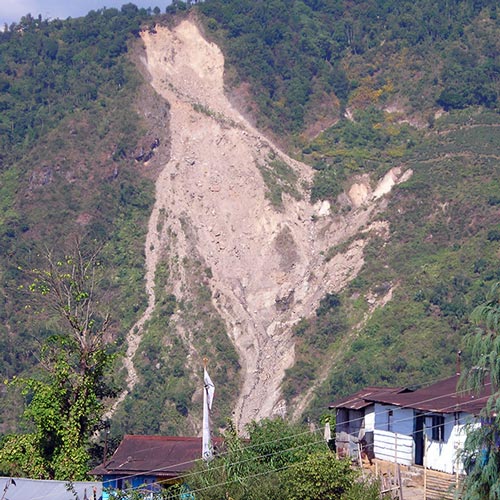WP3: meteorological dynamics
Task leads: Met Office, Consiglio Nazionale delle Ricerche, British Geological Survey

Tasks
Task 3.1: source, review and compare current meteorological data/knowledge
Task 3.2: identify sets of weather regimes for South Asia, India and pilot areas
Task 3.3: identify list of weather regimes relevant to increased landsliding in pilot areas
Task 3.4: weather-based thresholds for short-term landslide forecasting
Task 3.5: evaluate short-term forecasting models and weather-based thresholds
Key deliverables
- Report for stakeholders: summarise current meteorological data/knowledge
- Set of weather regimes for South Asia
- List: weather regimes for increased landslides in pilot areas
- Thresholds and report: weather-related landslide thresholds
- Report: short-term forecasting
- Peer-reviewed papers
WP3 uses a novel method, developed for the UK by the Met Office, to characterise weather patterns known as weather regimes. WP3 will apply weather regimes to south-east Asia (previously not done) and correlate these to increased landslide events/activity.
Probabilistic forecasts will look ahead for more than two weeks from these identified regimes, and will further identify high-risk regimes associated with landslide events. The high-risk regimes will then be used with detailed regional precipitation forecasts (one to five days) to identify landslide precipitation trigger thresholds.
UK example: 30 representative weather regimes
Recently, the Met Office (Neal et al., 2015) derived a set of 30 daily weather patterns over the UK and surrounding European area. The regimes enable specific weather impacts to be identified and investigated.
Forecast regional precipitation variability over areas of interest within each broad-scale regime
UK example (region to catchment scale)
- identify high-risk regimes, patterns of regime persistence and transitions that correlate to high landslide occurrence
- produce probabilistic forecasts for high-risk regimes to highlight periods with elevated risk of landslides at long lead times (two weeks or more)
- apply to weather regimes of south-east Asia, including monsoon season
India example (catchment to slope scale)
- rainfall forecasts across India and south-east Asia at shorter lead times (one to five days)
- apply landslide-triggering rainfall thresholds to landslide-susceptible areas in LANDSLIP pilot-study areas, forecasting elevated risk of landslides
